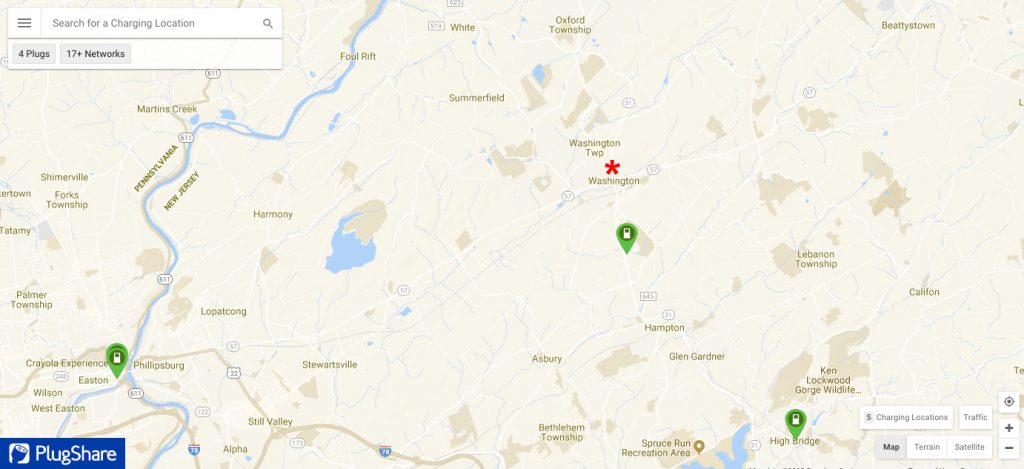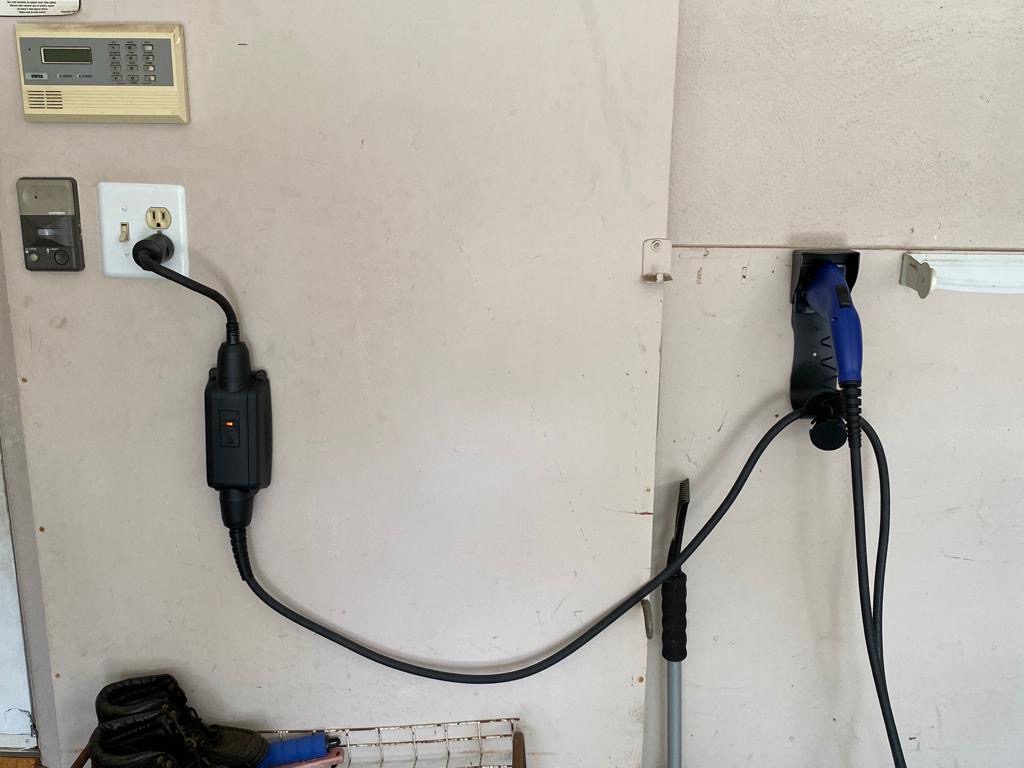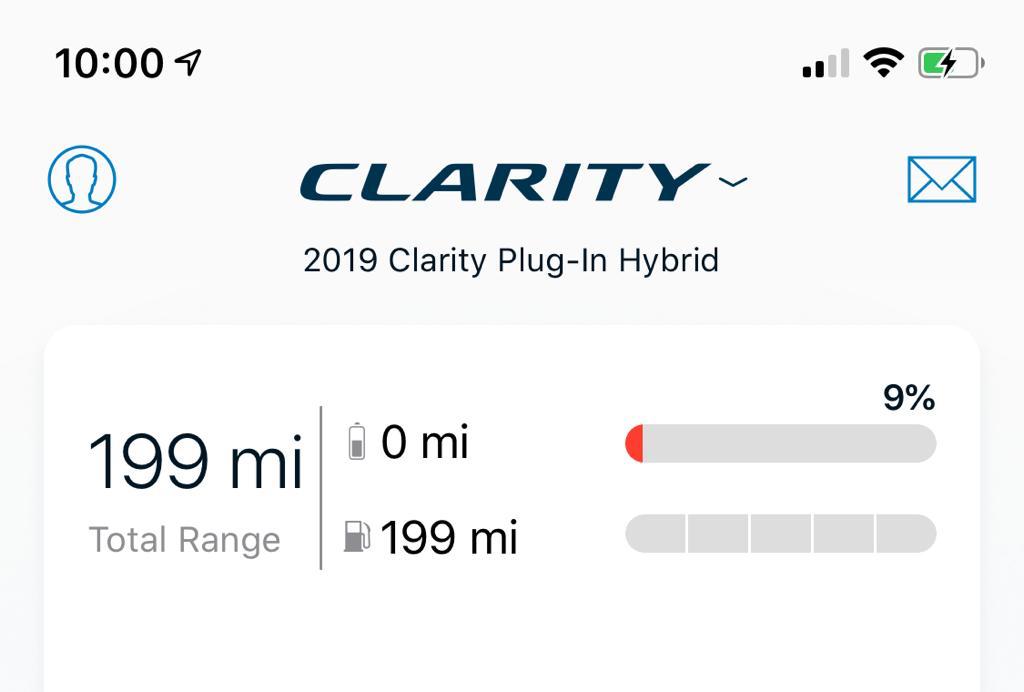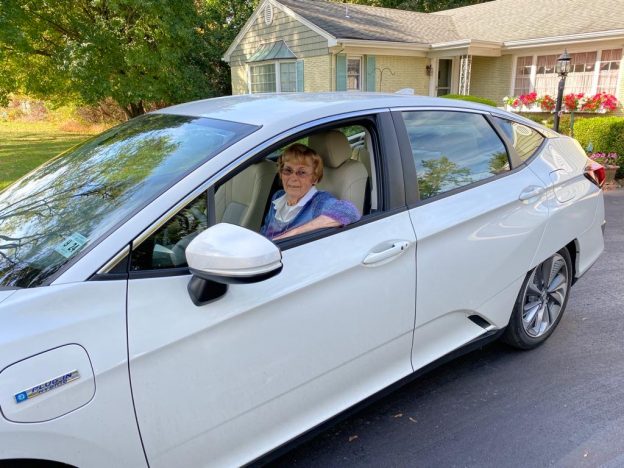November 2019. New Jersey.
My mother is 84 years young and maintains a very active lifestyle. I remember being 4 or 5 years old and always wanting to race her, I was always trying to keep up and wanted to be faster than her. Here we are 50 years later and I’m still trying to keep up. I get daily exercise reports from her fitness watch and she’s literally miles ahead of me every single day.
This post is about my Mom’s new car. She was coming up on the end of a 3-year lease on her Honda CRV and wanted to get a new car. She lives on the other side of the country so I wasn’t able to directly help in her search beyond encouraging her to seriously consider getting a plug-in car. My brothers and sisters did the heavy work of helping out by going along with my Mom to dealerships and dealing with the salesmen.
Most of her driving involves short trips around-town for running errands, buying groceries, etc. But twice a month she drives with friends to a meeting about 30 miles away, and about once a month she drives to visit one of my brothers or sisters who live up to 170 miles away. Those factors, and a few others, went in to our decision making process.
She decided that she wanted to get a Plug-in car to do her share to help make a positive change for our environment, and she also wanted to try out new technology. This time around she wanted to get a sedan, something with decent storage space in the trunk, and that “drove like a regular car”. So she went to a couple dealerships to test drive several cars including the Honda Clarity Plug-in Hybrid and the Chevy Bolt EV.
If you’ve been to a traditional dealership and asked about plug-in cars, odds are you had the same experience she had. Granted, there are salesman out there who know their cars. But it seems there are many more who are not well informed. The first salesman she spoke with told her that a plug-in car made no sense for somebody who makes short trips around town (the Clarity Plug-in Hybrid is perfect for that job), and that there were no rebates available for Honda’s Clarity (it’s eligible for a full federal tax rebate). I advised her to work with another salesman.
She test drove the Clarity and liked it, particularly that the driver controls and dashboard were similar to her previous car, which was also a Honda. She lives in a part of NJ that is not yet served by many public charging stations (see below). We felt that a plug-in hybrid like the Clarity she could charge in the garage on a 120V outlet, that she could drive in fully electric mode for her local errands, and that would cover a good bit of her longer trips was the best option for her.

For those not familiar with the Honda Clarity Plug-in Hybrid, it is similar in concept to the Chevy Volt. (Note, in a stroke of genius that may cause confusion, Honda sells 2 other versions of the Clarity that are powered by different drive trains: either fully electric, or hydrogen fuel cell). The Clarity Plug-in Hybrid has a 17 kWh battery pack (14.6 kWh usable according to the EPA) that provides an EPA-rated 48 miles of electric driving range, and when/if that has been used the car seamlessly switches over to the gas engine that can provide another 300 miles of range. The battery pack can be fully charged in ~12 hours on a 120V outlet, or ~2+ hours on a 240V circuit.
After test driving the Clarity and realizing that it would meet her needs, my Mom’s remaining concern was what would happen if she forgot to plug in the car. So I asked her, “Do you ever forget to plug in you phone at night?” “No”, she said. I explained this car would be just like her phone, plug it in at night and don’t worry about it. In fact, I advised her to get in the habit of plugging it in every time she pulled into the garage, and that’s what she does now.

She’s had the Clarity PHEV for 2 months and really likes the car. Plugging in after parking in the garage is now second nature. Most days she doesn’t drive that much so the 120V charging is sufficient for her day-to-day driving needs. In fact, over 2 months the Clarity’s electric drive train has covered over 90% of her driving. When she does travel to my sister’s house 170 miles away, her Clarity has a 7 gallon gas tank that will get her where she needs to go. She has gone to a gas station twice so far, and paid $4 total to add gas to the tank.
Update: My mother just took her first ‘long’ trip in her Clarity. She drove 170 miles to visit my sister in south Jersey. She called me up before leaving, and asked me “Are you sure I’m going to get there?” I reassured her she’d have no problems. She left with a full battery, drove the first 45 or so miles electric, then the car seamlessly switched over to gas power. After driving 170 miles she arrived at her destination with 199 miles of range in the gas tank, and she ‘s now recharging the battery with the mobile charging cord that came with her car.

She’s getting pretty good at driving an EV. The electric driving range of the Honda Clarity Plug-in Hybrid is rated at 48 miles by the EPA. But twice now she’s driven to her monthly meeting 30 miles away and nearly made it back home solely using the electric drive train. Both times she got past 55 miles of electric driving before the gas engine switched on. She’s also showing off her new car to friends and neighbors. Only 2 months in and she’s becoming an EVangelist.

Emissions and $$: By switching to a plug in car my Mom drastically cut the amount of CO2 and other pollutants produced from her driving. Electricity in NJ produces relatively low emissions that are much lower than emissions from burning gasoline. So let’s compare emissions for driving 48 miles by burning gasoline versus driving electric in NJ.
Driving Electric: Emissions from producing electricity in NJ average 0.527 pounds of CO2 per kWh of electricity (source for state-by-state emissions: US Energy Information Administration). The Clarity’s battery pack capacity is 17 kWh, but the battery has a buffer that lengthens its lifespan, and only 14.6 kWh are used for driving. Let’s round that up to 15 kWh for simplicity. 120 Volt charging is approximately 75% efficient so it takes 20 kWh of electricity to store 15 kWh in the pack when using 120 Volt charging. (FYI: 240 Volt level 2 charging is better – about 85% efficient). Final tally: 20 kWh X 0.527 lbs CO2 per kWh = 10.5 pounds of CO2 to drive 48 miles electric.
Burning Gas: Burning a gallon of gas emits 19.6 pounds of CO2. The Clarity Plug-in Hybrid is rated at 42 MPG when driving on gas. Driving 48 miles would use 1.14 gallons of gas that releases 22.3 pounds of CO2, which is more than double the emissions from driving electric.
Driving Electric is Cheaper: Again, by driving electric my Mom immediately cut her emissions in half. She’s also saving a little bit of money. Gas is currently $2.40 in her town and she pays 12¢ per kWh at home. So she’d pay $2.74 to drive her 42 MPG car 48 miles in gas mode, versus $2.40 in electric mode.
I’ve been encouraging my family to get plug in cars for over 6 years now. Little did I know that my Mom would be the first to step up. Before Mom got the Clarity, I spoke with my all of my brothers and sisters several times. One of my brothers mentioned that he thought she should get a Model 3 – and trust me if she wanted to go that way I’d have been there with her. But, we just didn’t feel it was the car for her and her situation. As for my brother? I think he’s the one who really wants the Model 3.

